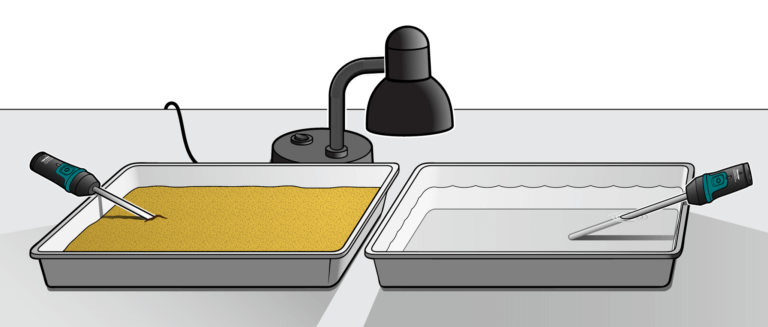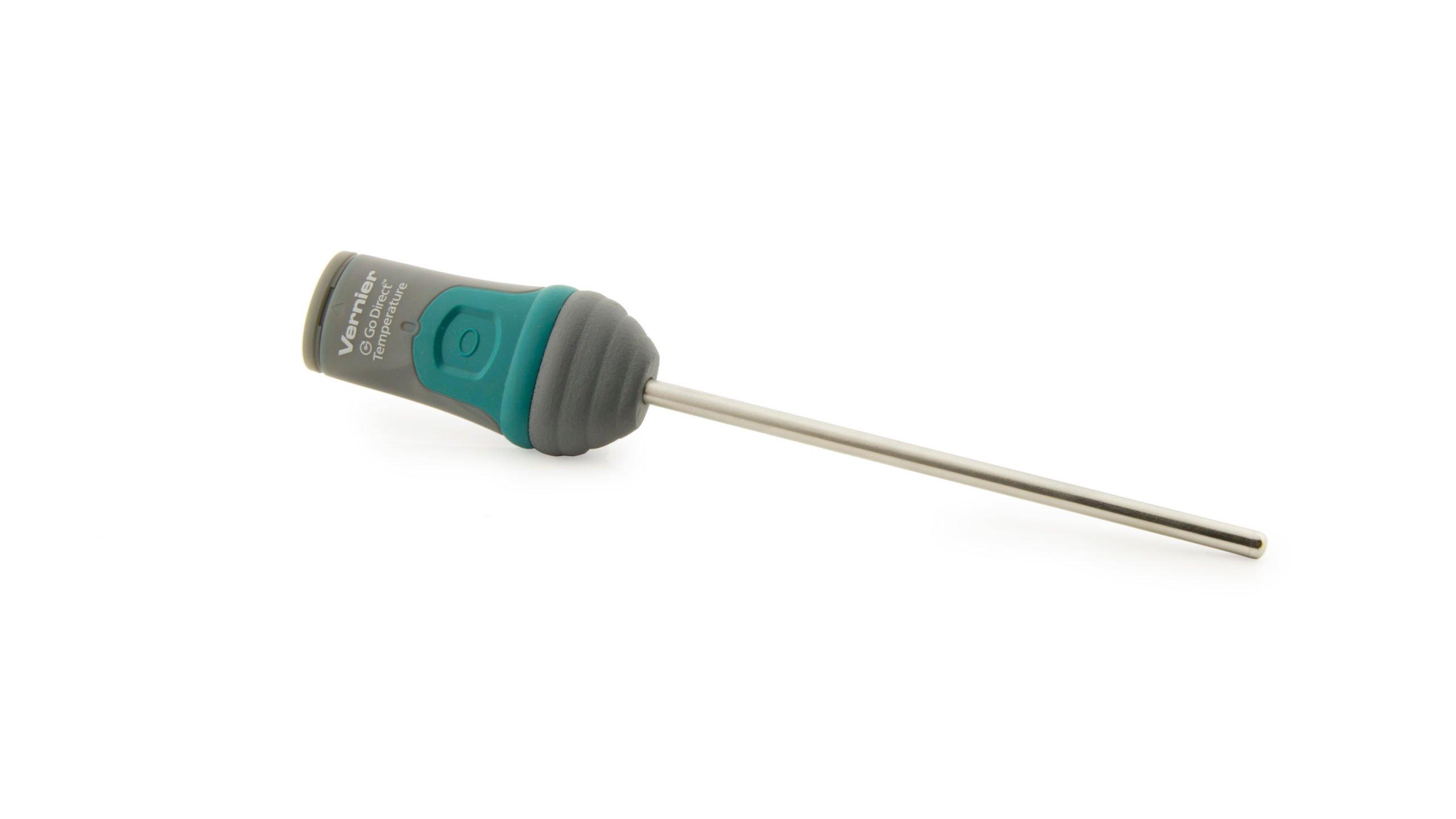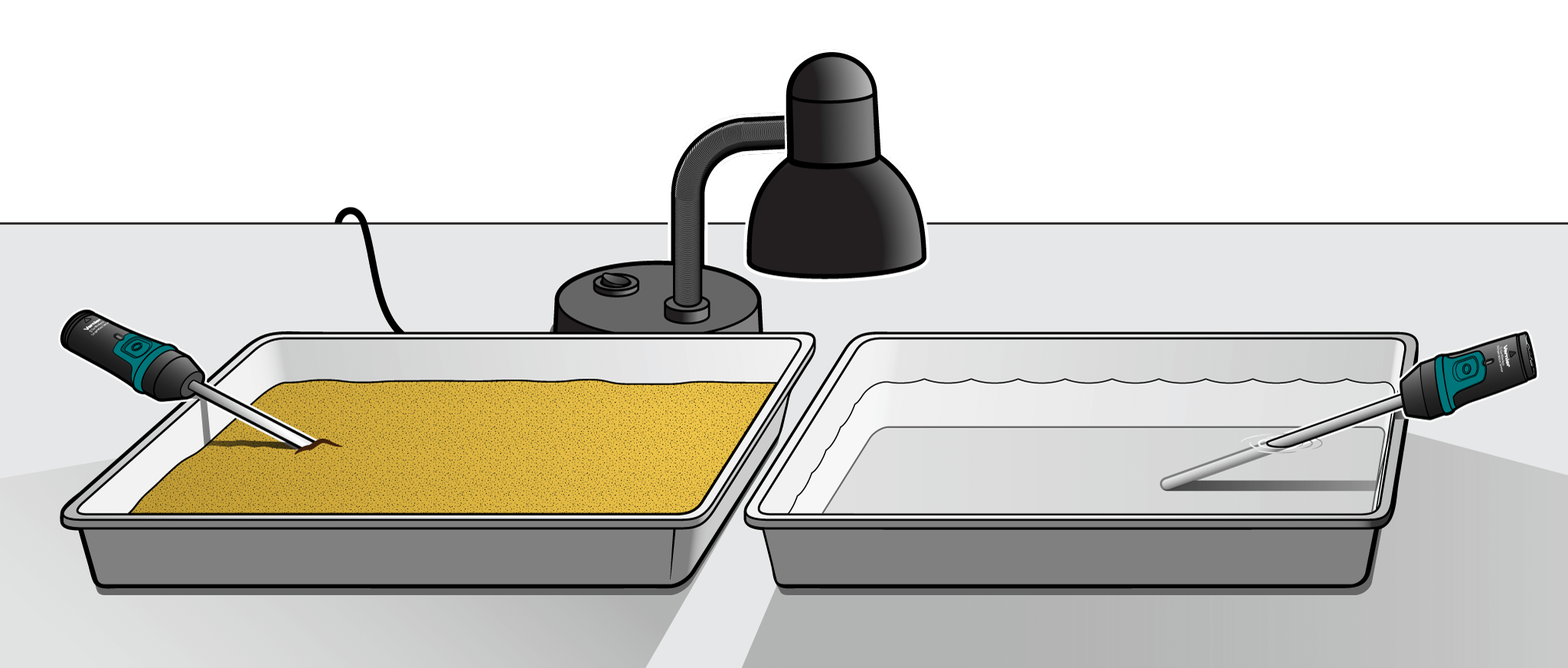
Introduction
Land breezes and sea breezes refer to winds that often occur near an ocean or lake. Land breezes blow from the land to the water while sea breezes blow from the water to the land. Both of these breezes are caused by uneven heating of the Earth’s surface. In this experiment, you will recreate the conditions under which these breezes form and study their causes.
In Part I of this experiment, you will expose sand and water to a light source representing the sun. You will monitor the temperature of the sand and the water and compare their warming behaviors. In Part II, you will monitor the temperatures as warm sand and water cool. This simulates the situation when the sun goes down in the evening. You will then apply your results to local weather patterns.
Objectives
- Use a temperature probe to measure the temperature of land and water.
- Calculate temperature changes.
- Apply your results to local weather patterns.
- Predict the occurrence of land and sea breezes.
Sensors and Equipment
This experiment features the following sensors and equipment. Additional equipment may be required.
Ready to Experiment?
Ask an Expert
Get answers to your questions about how to teach this experiment with our support team.
- Call toll-free: 888-837-6437
- Chat with Us
- Email support@vernier.com
Purchase the Lab Book
This experiment is #25 of Earth Science with Vernier. The experiment in the book includes student instructions as well as instructor information for set up, helpful hints, and sample graphs and data.



